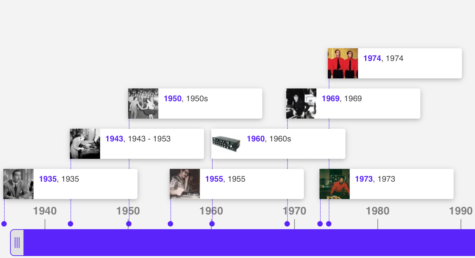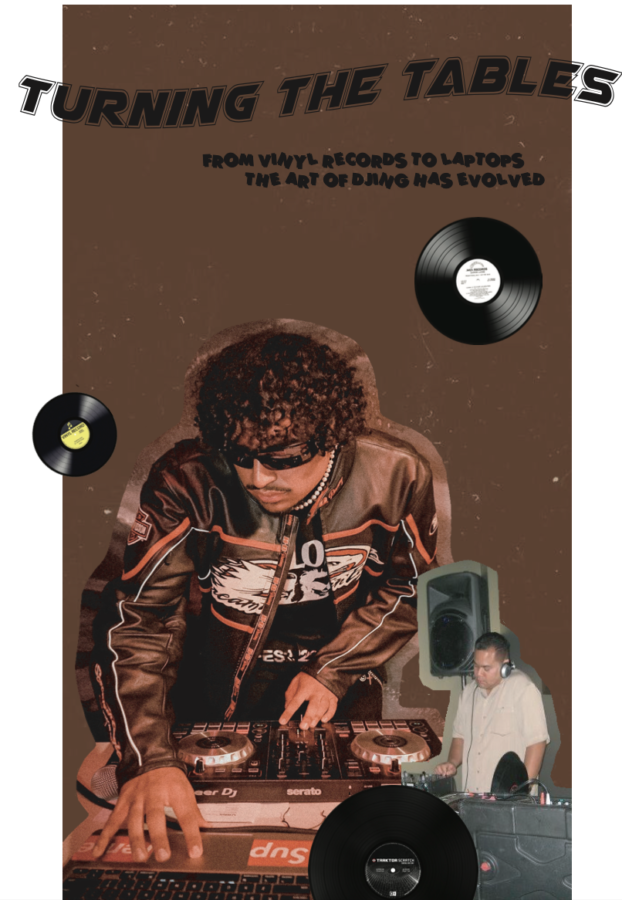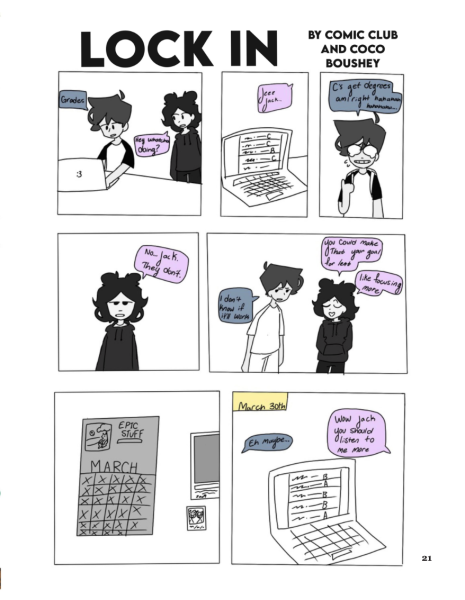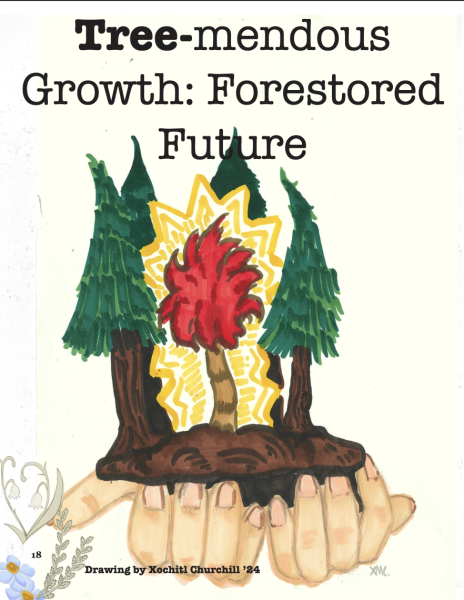Turning the Tables
From vinyl records to laptops, the art of DJing has evolved
Grayson Salomon ’22 and Alex Datoc ’87 are two Riordan alumni who have experienced the art of DJing in two very different ways.
December 16, 2022
As the age of records, cassette tapes, and mix-tapes are slowly coming to an end, and as their memories slowly disappear in the shadows of society, they are reborn with digitized music and MP3s.
The evolution of music also impacts the most important person at any event, party, or celebration, the Disk Jockey, better known as the DJ.
The DJs evolve with the music, adjusting their styles, equipment, and musical talents to become accustomed to the constantly changing music. But despite all of the new flashy equipment and styles, no one should ever forget the plight of the original DJs.

Henry Lacanlalae ’88 was one of the first waves of DJs when DJing first hit mainstream, and everyone knewsomeone who was a DJ. Introduced to the art of DJ in 1983, Lacanlalae was inspired to own his own set of DJ equipment at 12 years old.
Of course, this was not an easy task, as DJ equipment cost a great amount of money at the time, and to get started, a DJ would need around $2-3,000.
The DJs evolve with the music, adjusting their styles, equipment, and musical talents to become accustomed to the constantly changing music.
Today, people may think that is affordable, but those who grew up in the 80s knew this was a small fortune. In fact, it was so much money that it would take away half of the average worker’s monthly paycheck!
“With all the DJ equipment you had to buy, you could buy a brand new car at the time,” Lacanlalae exclaimed.
But after begging his parents for DJ equipment, Lacanlalae finally got a pair of $400 special turntables, theTechnic 1200s, that are able to match beats and control the pitch and a Numark mixer that was an additional $200 when he was 16 years old. But for DJs back then, this was only a quarter of the equipment that was needed.
Next came the speakers and the records. Depending on the speakers, it could cost double the amount needed toget started. Not to mention the amplifiers.
“I had mediocre speakers and it cost $1,400!” claimed Lacanlalae. “And that’s only the speakers!”
Then, DJs also had to buy the most important piece: records. Today, records cost around $40-60 a piece, but for DJs back then, records were around 50 cents to a dollar.
I bought two of every record just in case if the record skips, if the record melted, or if the record cracked.
— DJ Henry Lacanlalae ’88
“I used to be able to buy 12 records for around $3- 5, and now you could buy all the songs in the world with a monthly pay of a $1.50,” said Lacanlalae.
Records then were cheaper because they were not collectibles; it was strictly used for entertainment and the artistry of the DJ. The records would be produced in such large numbers and because most songs would not be on the same record, they would be on different records. That meant would have to buy a specific song on a single record, and they wouldn’t just buy one, they would buy two or three of the same record because of how easily the records break.
“I bought two of every record just in case if the record skips, if the record melted, or if the record cracked,” said Lacanlalae. “Now compare this to the DJs today, when all they have to do is boot up a MP5 or a hard drive on their computer and play music from there. They don’t have to worry about skips, melting, cracks, nothing! DJs today have it easy!”
In fact, it is extremely easy for DJs today to run solo. They don’t have to worry about records, the vast amount of black cables, or carrying truck loads of equipment. Also, today’s speakers have plug and play and power speakers with built in amplifiers.
Some DJs live off their gigs, but the majority just do it for a passion and the love of DJing.
— Brian Kosewic '16, moderator of the DJ Club
“DJs today only have to bring to a gig their speakers, a controller (modern day turntable), a laptop and an app called serato,” mentioned Angelina Ning, the current DJ club president at Riordan, “which not to mention is extremely affordable compared to the DJ equipment back then, but also extremely mobile.”
But back in the day, DJs could never run their business solo; instead, they would form DJ crews to transport lights, speakers, turntables, and of course hundreds and hundreds of records to their next gig.
Then there’s the gig money. DJs today collect their pay check and move on to their next gig, but with the Lacanlalae DJ crew, all the money would rarely go into their pockets; instead, they would use it for replacement lights, gas, and of course more records to stay current with the music.
“That’s a big reason why many DJs dont DJ for a career, they DJ for the love of the music, they have a passion for DJing,” said Lacanlalae. “It’s an artistic craft of beats, rhythm and sounds creating a sonic bend of music for crowds to enjoy.”
Its the passion of DJing, that makes DJs artists and even with the evolution of records to MP5 files. That burning passion has never dwindled down.
“Some DJs live off their gigs,” added Brian Kosewic, the moderator of the DJ Club, “but the majority just do it for a passion and the love of DJing.”
But, as time went by, all good things came to an end, and for Lacanlalae, he stashed away his DJ equipment and retired. The culture of DJing has developed and transformed using digital music in replacement of the records.
But according to Lacanlalae, “No digital music can compare to the sensation of putting a needle to a groove.”













